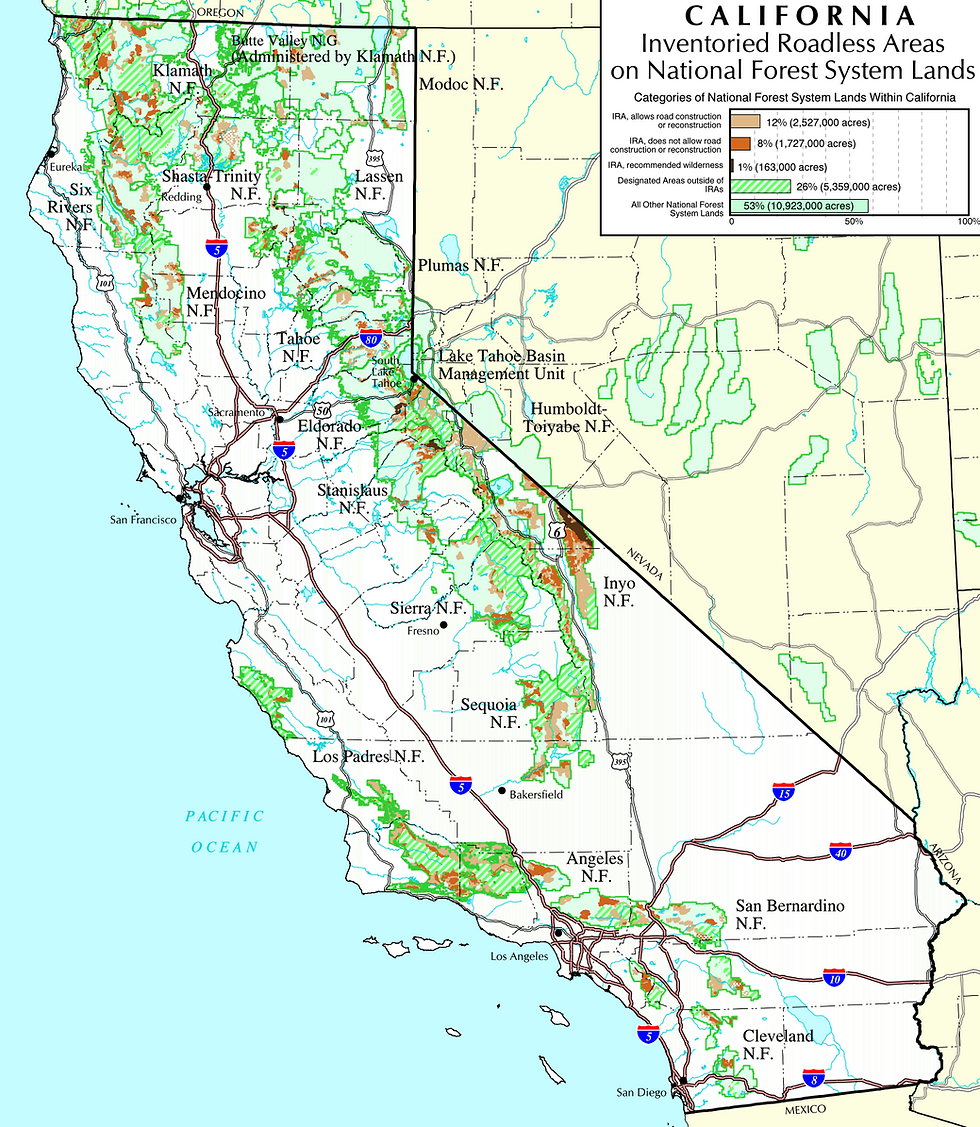Connectivity and Compromise
- Jun 11, 2013
- 2 min read
Over the last several years the Northwest California region has been host to a series of increasingly contentious conflicts related to large-scale transportation infrastructure projects promoted by the California Department of Transportation (Caltrans). One of the principal arguments that EPIC has put forth to explain our engagement on these infrastructure development issues at unique places like Richardson Grove State Park and the Smith River Canyon is that the site specific and cumulative impacts of these projects have not been adequately disclosed and analyzed. EPIC’s challenge to Caltrans is often painted as obstructionist, and though our organization is intent on stopping poorly designed Caltrans projects and ultimately reforming the agency, our organization does have a sophisticated view of these projects as an integrated whole that is far from obstructionist.
Unbeknownst to many North Coast residents, the largest of the Caltrans big truck highway expansion projects is currently under construction—and the project has purposefully received no challenge from our organization. When completed in 2017, the $60 million Buckhorn grade infrastructure construction projects on Highway 299 will facilitate unfettered access along Hwy 299 between Interstate 5 and the North Coast for the largest trucks on the road today–the STAA supersized cab trucks that are so common on the nation’s interstate highway system.
The Buckhorn Summit projects are not without their environmental impacts–over the course of project implementation more than 2,000,000 cubic yards of earth will be moved to straighten and widen the famous stretch of steep curves on Highway 299 right at the western border of Shasta County. This is no small project–but EPIC has strategically remained distant from that project as a demonstration of our respect for the economic interests that desire big STAA truck access to the North Coast. There is no question that the fastest, most direct route for goods from Humboldt County to national markets is the direct line out Hwy 299 to Interstate 5 and all points north, east, and south.
The Buckhorn Summit STAA access projects make up an important infrastructure development that should be taken into consideration to understand the integrated vision of EPIC efforts to challenge Caltrans—and to understand the clearly inadequate analysis of cumulative impacts by the agency. While Caltrans has been pushing forward with their unnecessary STAA project in the Smith River Canyon, disregarding the input of local citizens and regional conservation groups, EPIC has stood aside on the Hwy 299 Buckhorn Summit projects in respect of the desires of local producers for improved large-scale transportation infrastructure development and STAA truck access.
What is happening here is that EPIC is willing to compromise in support of improved economic connectivity, while still standing true to our mission and defending the unique natural qualities of our bioregion from a road building agency that refuses to fully disclose the impacts of their highway development agenda. In this instance it can be rightly concluded that it is not EPIC that is refusing to compromise with Caltrans around the conflictive issues of highway development on the North Coast of California. It is instead Caltrans that refuses to compromise, and who leaves our community members little recourse other than resorting to legal means to ensure that our region is protected from unnecessary, damaging, and wasteful highway development projects in some of the most special places remaining to us on the North Coast, and indeed, our planet.
Read also the My Word article from the Times-Standard — EPIC Supports Economic Connectivity





Comments